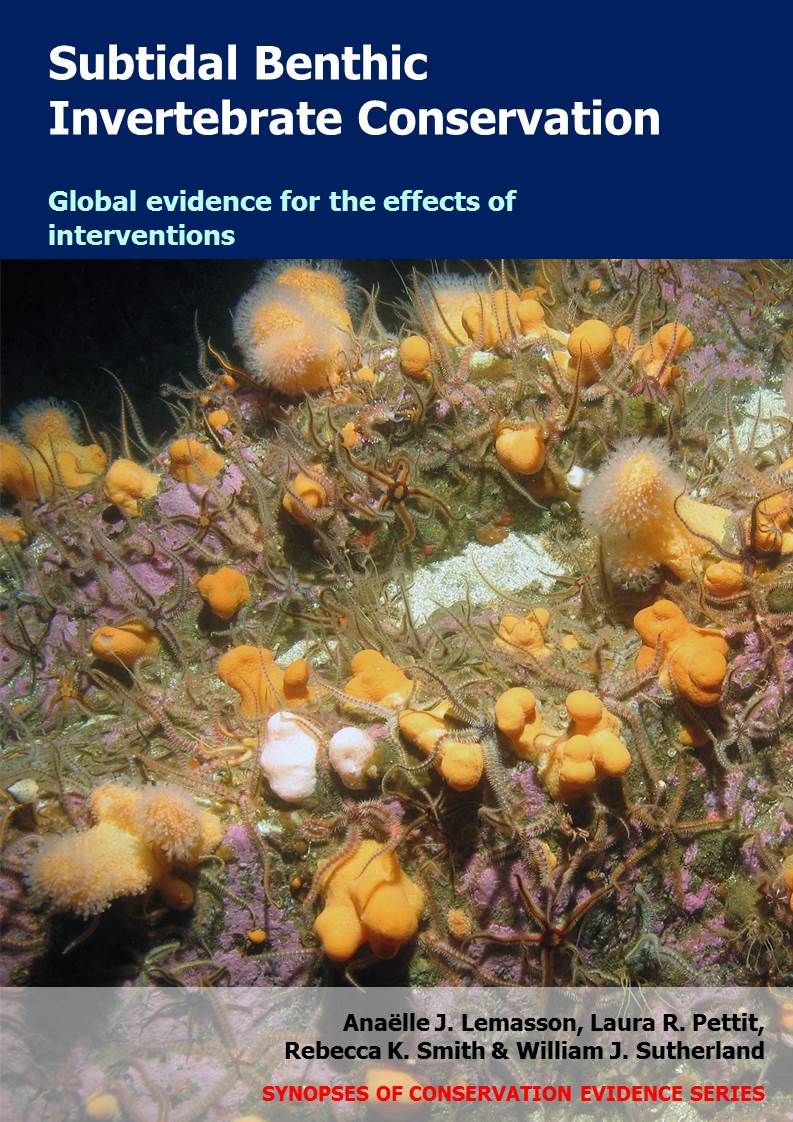Reduce the number or modify the arrangement of tickler chains/chain mats on trawl nets
-
Overall effectiveness category Unknown effectiveness (limited evidence)
-
Number of studies: 2
View assessment score
Hide assessment score
How is the evidence assessed?
-
Effectiveness
43% -
Certainty
32% -
Harms
10%
Study locations
Supporting evidence from individual studies
A replicated, paired, controlled study in 1992–1995 in one area of sandy seabed in the south-eastern North Sea, Netherlands and Germany (Bergman & Van Santbrink 2000) found that using a beam trawl with a chain mat caused lower mortality of benthic invertebrates in the trawl tracks (not caught by the nets) compared to using a beam trawl with tickler chains. Mortality using a chain mat varied between 4 and 15% depending on species and was lower than when using tickler chains (1–30%). In spring-summer 1992–1995 parallel strips (2,000 x 60 m, 300 m apart, number unspecified) were fished with 4-m beam trawls with either a chain mat or tickler chains. Prior to trawling, ‘mega’-invertebrates >10 mm) and ‘macro’-invertebrates (between 1 and 10 mm) were counted from samples taken from each strip using a dredge and a sediment grab. After 24–48 h following trawling, all strips were sampled again using the same methods. Mortality (from trawling) of invertebrates present in the trawl tracks was calculated using the difference between the before and after-trawling abundances (assuming all animals killed by trawling had been eaten by predators).
Study and other actions testedA replicated, paired, controlled study in 1999 in one area of seabed in the North Sea, Netherlands (Van Marlen et al. 2005a) found that none of three modified tickler chain arrangements for trawl nets reduced the amount of non-commercial unwanted invertebrates and fish catch (discard), compared to unmodified trawl nets. Nets modified with two of the three tickler chain arrangements tested caught similar amount of discard to unmodified nets (153–175 vs 145–166 kg/h). The third arrangement (25 cm spacing) caught more discard than unmodified nets (123 vs 112 kg/h). All modified nets caught similar amounts of commercial species to unmodified nets (35–50 vs 33–36 kg/h). In conventional tickler chain rigging, both ends of chains are attached at either ends of the beam. Three parabolic tickler chain arrangements, where attachment points are distributed along the beam, were tested on trawl nets: 25 cm spacing; 40 cm spacing; 25 cm spacing with 35 cm for the centre chain. In October 1999, each arrangement was compared a conventional tickler chain during 5–17 paired simultaneous deployments along parallel strips (2,000 x 30 m). Catches were sorted into commercial and discard species, and each group weighed.
A replicated, paired, controlled study in 1999 in one area of seabed in the North Sea, Netherlands (Van Marlen et al. 2005b) found that all three modified tickler chain arrangements for trawl nets reduced the amount of non-commercial unwanted invertebrates and fish catch (discard), compared to unmodified trawl nets. Nets modified with either of three tickler chain arrangements tested caught less discard than unmodified nets (46–80 vs 80–117 kg/h). However, all modified nets also caught lower amounts of commercial species compared to unmodified nets (43–49 vs 52–58 kg/h). In conventional tickler chain rigging, both ends of chains are attached at either ends of the beam. Three parallel tickler chain arrangements, where chains are distributed along the beam but only attached at one end, were tested on trawl nets: 21 chains, 50 cm spacing; 29 chains, 35 cm spacing; 29 chains, 35 cm spacing with 10 connected pairs. In March–April 1999, each arrangement was compared to a conventional tickler chain during 11–42 paired simultaneous deployments along parallel strips (2,000 x 30 m). Catches were sorted into commercial and discard species, and each group weighed.
Study and other actions tested
Where has this evidence come from?
List of journals searched by synopsis
All the journals searched for all synopses
This Action forms part of the Action Synopsis:
Subtidal Benthic Invertebrate Conservation





)_2023.JPG)














